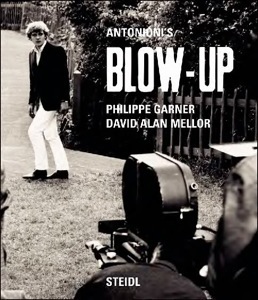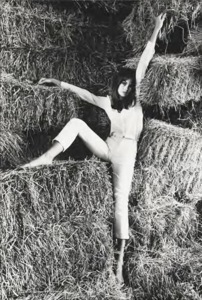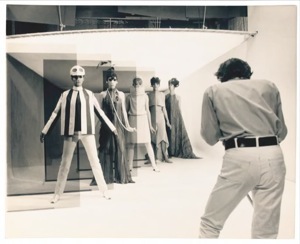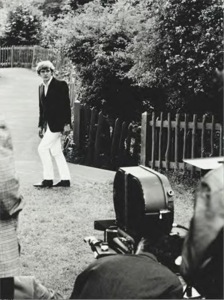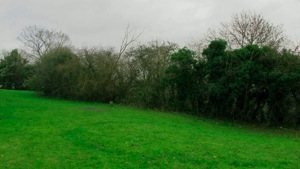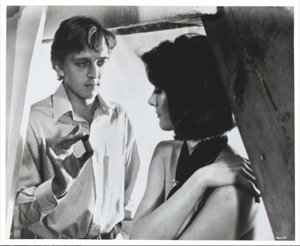“The first comprehensive study of this cinematic masterpiece – a
fascinating analysis of the film’s central theme of photography, and an
insightful account of the fashion and art scene of mid-1960s London in
which the film is set.”
You know that we like to pursue the talk here at 160grams; our last
issue being about cinema, we could not have missed Steidl’s latest
gem. Blow-Up (1966), a film often mentioned in the magazine, is one of
those iconic, sublime and very intellectual films that seldom find
publications that go beyond its superficial message. Luckily,
Antonioni’s Blow-Up is such a publication. It is a spectacular table-
book, containing countless vintage prints, stunning on-set stills and an
extensive amount of artworks and documents of the time, but it is also
a very serious study of the film through two very insightful essays.
The first essay, by Philippe Garner, is called “Fleeting images:
photographers, models and the media – London, 1966” and brings
back to life the time of Bailey, Donovan and Duffy, of Veruschka’s
Swinging London, of the Modernist and Brutalist movements as well as
the rise of Pop. What Garneralso underlines is the thorough research
that Antonioni went through to prepare Blow-Up – surrounding himself
with contemporary British artists, such as Don McCullin, who shot the
photos shot by Thomas (the photographer and protagonist) in the film,
and painter Ian Stephenson, whose works are displayed in the film.
David Alan Mellor’s “Fragments of an unknowable whole:
Michelangelo’s Antonioni’s incorproration of contemporary visualities –
London, 1966” focuses on the relationship between Antonioni’s visual
language and British visual culture. As often with Antonioni, his films
are more than cinema: inBlow-Up especially, film is fused with
photography and painting. If in his previous and first Technicolor
film Deserto Rosso (1964), he used the visual vocabulary of
metaphysical artists and of Arte Povera, he turns towards
Rauschenberg, Richard Hamilton and Ian Stephenson for Blow-
Up. Pop Art and Swinging London mingle in a world of fashion,
appearances, photography and “mutability of evidence”. Considered
the only informal artist of cinema, Antonioni transforms the theme of
destruction of Deserto Rosso into the theme of destructive reproduction
in Blow-Up. Polysemic confusions between reality and imaginary are
the core of Blow-Up; the enlargement of the photographs leads to
mysterious, abstract and grainy canvases that belong to the world of
dream more than to that of reality.
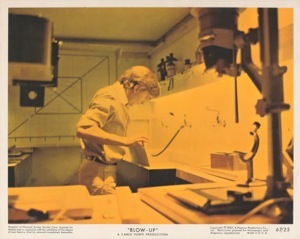
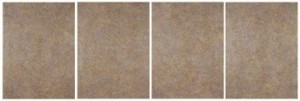
Tate Britain; Ian Stephenson, Quadrama IV, 1969
Assheton Gorton reified the horizontal planes of Maryon Park – the
grass and paths –, lending a hyper-real aspect by adding green and
black paint to these surfaces, just as he added blackness to the tarmac
of the street outside Thomas’s studio. This process paralleled Boyle
and Hill’s taking of horizontal metropolitan ground, and isolating it as
hallucinatory. In such ways London, underfoot, artificially layered,
activated and pigmented, assumed a fascinating extra chromatic
weight and density.”
Antonioni also painted his own sets – the grass of Maryon Park has
been covered with green and black paint to make it look more real. The
director used what he called “colore mentale”, paradoxically over
painting reality instead of denying it. Thus not only the images within
the film, but the images of the film itself are artificially recreated to fit a
theatrical world that perfectly represents the absurdity of a fashion
photographer’s vision.
Mellor describes Maryon Park as a “theatrebox” setting, a parallel
universe of the unstable and the factitious. He also points out how
Antonioni followed the events of his time and the photographic
reproductions of Kennedy’s assassination especially: these remind us
of the relationship between photography and show during the Sixties.
Theatricality in Blow-Up is omnipresent, with pantomimes and
carnivalesque figures of protesting students, models transformed into
dummies and robots, mannequins ever-performing through their use of
drugs. Theatre, music, film, photography, art and death are subtly
united in a film that is both the quasi-photographic witness of its era
and a sum of the works of art of its period at the same time.
Finally, Antonioni’s Blow-Up gives justice to the important and often
forgotten roles of Antonioni’s art director (Assheton Gorton) and
producer (Pierre Rouve), and to some themes that go beyond the usual
readings of Blow-Up, such as the Christian imagery mixed with a
metaphysical philosophy and the park as an interrupted Arcadia – not
only the setting of a mysterious event.
Park, Greenwich, February 2011 (photo Isa Jakob) – even nowadays,
despite the absence of the fences, the park is as metaphysical and out
of time as in Antonioni’s and Thomas’ time.
Images and preview of the book courtesy of Poppy Melzack; for more
informations, visit Steidl’s page (the book, freshly published, has 113
pages, hardcover with dustjacket, and measures 24.5 cm x 28.6 cm).
In case you have never seen the film, we highly recommend you to!

